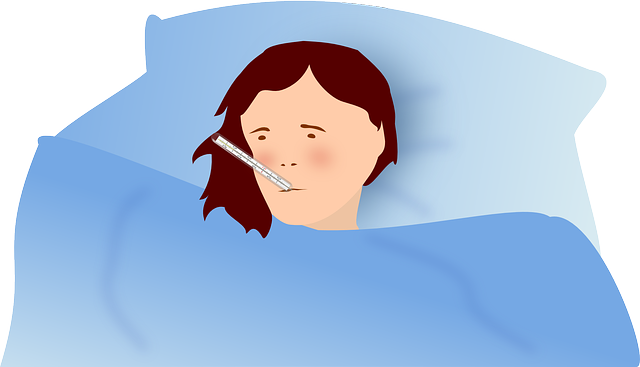Dealing with Fever

Fever occurs when body temperature is above normal range ie above 36.5 degree Celsius or 98.6 degree Fahrenheit.
A high body temperature, or fever, is one of the ways our immune system attempts to combat an infection resulting in sudden rise in white blood cell (WBC)count. Usually, the rise in body temperature helps the individual resolve an infection. However, sometimes it may rise too high, in which case, the fever can be serious and lead to complications.
Following are the Dos and Donts of fever care viz.
Dos:
- Rest and eat a low-impact diet, fruit is ideal. Avoid food that uses lots of digestive energy like meat. If you have no appetite then don’t eat but do drink adequate water
- Keep the room well ventilated allowing more fresh air or sunshine that will drive away any indoor pollutants and have positive impact on health.
- In case of fever with temperature like 102 degree F , we can give Cold sponge to reduce temperature.
Don’ts
- It is usually best to not suppress low fevers (under 100 degrees) by taking pills. Fevers are part of a purging and cleansing process so it’s best to work with it rather than against it. Higher fevers can be life-threatening, best to seek immediate professional opinion.
- Keep in mind that allopathic medicine is concerned mainly with the alleviation of symptoms rather than the healing process itself. Some acute illnesses require symptom relief.
- Dont bundle up extra with blankets thinking sweating may help to recede fever .It may provide relief but chances are it may rise temperature further.
- In case of children be extra careful while handling thermometers.
How to check temperature?
Things required:
- You need a digital thermometer.
- Diluted detol liquid soaked cotton balls to clean the thermometer.
- Clean dry cottons to clean the thermometer before use.
- Bowl to collect the used cottons.
Make sure:
- Baby is not wearing a lot of clothes
- Don’t check temperature soon after a bath
- Baby is not wrapped up tightly in blanket. Remove the blanket
- Open the windows and make sure room is not very warm
- If this is the case, allow them to cool down for a few minutes (without allowing them to become cold or shivery), and take their temperature.
Procedure:
- Wipe the thermometer using the dry cotton ball.
- Switch on the thermometer and make sure you see display L0
- Hold your baby comfortably on your knee and place the thermometer under the baby’s armpit.
- Gently but firmly hold their arm against their body to keep the thermometer in place, for the time stated in the manufacturer’s instructions (usually about 15 seconds).
- Some digital thermometers beep when they are ready. The display on the thermometer will then show the baby’s temperature
- Normal baby temperature is 97.4° (Fahrenheit) , 36.4°) (Celsius)
- If the temperature is above 100° F (37.5° C), it means the baby may be having fever.
Other signs of fever are:
- Irritable cry
- Refusing feeds
- Thermometer Usage:-
Thermometer is a device for measuring body temperature of an individual to assess febrile condition.
- Following are the Do’s and Don’ts of using a thermometer viz;
Do’s:
- Compare the accuracy, suitability, convenience and price of thermometers before purchase.
- Choose a thermometer and method of measurement which suit the individual‘s age and health condition ;Consult healthcare professionals if in doubt.
- Familiarise with the correct use of thermometer and temperature reading by referring to the user instructions provided by manufacturer .Check temperature at eye level.
- Clean and maintain the thermometer according to the procedures recommended by the user instructions.
- In case body temperature needs to be taken regularly, take the temperature at the same time of each day and use the same temperature taking method to allow comparison.
- If there is any doubt about the body temperature reading, please consult healthcare professionals.
Don’ts:
- Avoid activities that would distort temperature measurement (e.g. drinking hot water immediately before taking oral temperature)and in case of axillary temperature do not keep the thermometer over the clothing.
- Don’t put clinical/glass thermometer inside mouth of infant or those below 5 years.
- Don’t touch the bulb of the temperature while measuring as it will give incorrect reading.
- Don’t shake the thermometer too hard as you may drop it.
- Preferably Digital thermometer should be used.
Types of thermometer:
- Mercury-in-glass/ Alcohol-in-glass Thermometer– Measures oral or armpit body temperature through the thermal expansion of mercury/ ethanol.
- Electronic (digital) Thermometer-Measures usually axillary temperature
Steps of using a digital thermometer:
- Firstly make the patient lie/sit down in a comfortable position and ask them to loosen their clothes for easy access.
- Clean the thermometer from bulb to stem using alcohol swabs. In case of digital ones just switch on the on button and place them at axilla.
- In case of Axilla, make sure armpit is dry and clean before putting thermometer as moisture/sweat may hinder correct reading.
- In case of digital ones, an automated beep sound is heard once temperature is recorded.
- Read the temperature.
- Now clean the thermometer from stem to bulb with alcohol swab and keep it aside.
- Comfortably position patient and record the findings.
To read more on Baby care, click on the link below,


